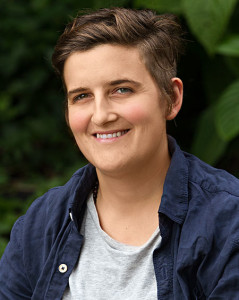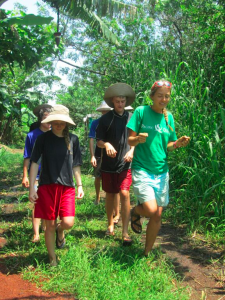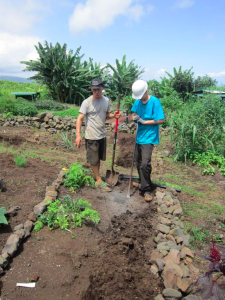 By Clementine Wilson, Field Manager
By Clementine Wilson, Field Manager
Anyone who has worked as a wilderness therapy guide has probably struggled to answer the question: “what do you do for a living” or “what’s your job like?” As a former guide, I’ve certainly struggled to find the words to explain the incredibly unique and challenging role of the professional Program Guide in this industry.
As a former Program Guide and now, as a current Field Manager who is directly responsible for training, developing and supporting our Program Guides, I continue to be humbled and amazed at the depth and complexity of responsibilities expected of this role. I hope to use this space to shine a light on the professional guide role, and to give a heartfelt shout out to all the amazing individuals who are showing up every day to help our students find their own identity, strength, motivation and self-worth.
I recently attended a professional workshop titled “Being a Grounded Anchor.” The presentation focused on field guides and dissecting their complex and dynamic role in the wilderness therapy industry. Professional guides and other leaders in the industry discussed what traits, goals and skills makes them successful and effective in the field.
So what does it mean to be an effective guide? As we discussed in this workshop, an impactful guide is patient, knowledgable, empathetic, inspiring and fun. Consistently carrying these diverse traits through the uncertainty of day to day life with our students is no easy task. From dawn until after dark our guides live, breathe, cook, eat, clean, exercise, farm, study and celebrate alongside the students. They teach the students our curriculum and demonstrate healthy mentoring through harnessing teachable moments and passing on important and relevant life skills through role modeling and practical testing. They are there through all the ups and downs, constantly readjusting plans and expectations, while still challenging and encouraging each student toward growth and wellness.
It’s important to note that Program Guides are not responsible for making the students care or to do the work for them. They are, however, responsible for showing the students what it means to care – what does it look like to care about something? Why is it important to care? As a mentor of mine once stated “we are there to show the students that adulthood is worth it.” This is achieved through genuine and authentic role modeling and mentoring.
them. They are, however, responsible for showing the students what it means to care – what does it look like to care about something? Why is it important to care? As a mentor of mine once stated “we are there to show the students that adulthood is worth it.” This is achieved through genuine and authentic role modeling and mentoring.
The Program Guides are an integral part of the treatment team out in the field. The therapist/guide relationship is incredibly important to bring about healthy change in the students. This dynamic collaboration has the potential to harness the professional expertise of both clinician and the Program Guide. Program Guides facilitate therapeutic interventions, follow through on treatment goals and are consistently the eyes and ears of day-to-day life in a group focused therapeutic environment.
In our specific horticultural therapy setting here at PQ, the Program Guides show the students that we don’t grow food just for ourselves, we grow for each other. They show them that we rely on the hard work and vision of the past in order to harvest today; we rely on the motivation and vision of the present to plant seeds for the next generation; and we hope for a future that cares enough to water. This isn’t just about farming, it’s about living an authentic life and being a contributing member of a community. It’s also about finding place and identity through connection to ancestry and legacy.
 To be a grounded anchor means to stay steady in uncertain waters; to be consistent and trusted. An anchor is a source of security and stability. These traits are essential for maintaining physical and emotional safety in any outdoor therapeutic program. Another metaphor to describe the role of the Program Guide is “captain of the ship.” An effective captain is skilled at listening and reflecting; demonstrates consistency, and is calm, concise and confident. A captain obviously can’t control the weather, but does control how to navigate the weather safely and effectively.
To be a grounded anchor means to stay steady in uncertain waters; to be consistent and trusted. An anchor is a source of security and stability. These traits are essential for maintaining physical and emotional safety in any outdoor therapeutic program. Another metaphor to describe the role of the Program Guide is “captain of the ship.” An effective captain is skilled at listening and reflecting; demonstrates consistency, and is calm, concise and confident. A captain obviously can’t control the weather, but does control how to navigate the weather safely and effectively.
My hope is that this brings some clear awareness and respect to the hard work our Program Guides perform day to day out in the field. If you are a professional Program Guide reading this post, thank you for your ongoing commitment, awareness, responsibility and effort.